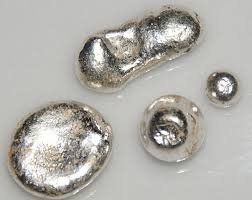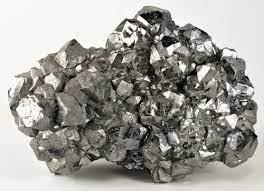Silver, with its lustrous sheen and captivating allure, has been cherished throughout history for its versatility and timeless elegance. From ancient civilizations to modern-day innovations, silver continues to captivate hearts and minds alike. In this article, we delve into the multifaceted world of silver, exploring its historical significance, contemporary applications, and enduring appeal.
Historical Significance: Dating back millennia, silver holds a storied past steeped in cultural significance and economic importance. Ancient civilizations revered silver for its rarity and beauty, often utilizing it for ceremonial purposes, currency, and adornment. From the coins of ancient Greece to the intricate silverwork of the Renaissance period, this precious metal has left an indelible mark on human history, symbolizing wealth, prestige, and artistic excellence.
Contemporary Applications: In the modern era, silver’s versatility knows no bounds. Beyond its traditional uses in jewelry and currency, silver plays a vital role in various industries, including electronics, medicine, and photography. Its exceptional conductivity makes it indispensable in the production of electronic components, while its antimicrobial properties have led to its widespread use in medical devices and healthcare settings. Furthermore, silver nanoparticles are revolutionizing fields such as nanotechnology and environmental science, promising innovative solutions to complex challenges.
Enduring Appeal: Despite the ever-changing landscape of fashion and technology, silver maintains its allure as a timeless classic. Whether adorning the wrists of fashion-forward individuals or gracing the shelves of art collectors, silver continues to inspire awe and admiration. Its ability to effortlessly complement any style or setting ensures its enduring popularity across generations. Moreover, as sustainability and ethical sourcing become increasingly important considerations, silver’s status as a recyclable and eco-friendly material further enhances its appeal to conscientious consumers.
In conclusion, silver stands as a testament to the enduring power of beauty and innovation. From its ancient origins to its modern-day applications, silver continues to captivate and inspire. As we navigate an ever-changing world, the allure of silver remains steadfast, reminding us of the timeless elegance found in simplicity and refinement. So whether in the form of a cherished heirloom or a cutting-edge technological marvel, silver continues to shine bright, illuminating our lives with its unparalleled brilliance.

Embrace Timeless Beauty with Pure Silver: A Glance into Its Enduring Allure
Pure silver, with its radiant gleam and unmatched purity, has long been revered for its timeless beauty and elegance. As a cherished metal with a rich history spanning centuries, it continues to enchant enthusiasts and artisans alike. In this article, we delve into the world of pure silver, exploring its remarkable qualities, historical significance, and contemporary relevance.
The Splendor of Pure Silver: Pure silver, also known as fine silver, is renowned for its remarkable purity and brilliant luster. Composed of 99.9% silver, it embodies the essence of elegance and sophistication. Unlike sterling silver, which contains alloys for added strength, pure silver retains its pristine appearance and inherent shine, making it a coveted choice for discerning connoisseurs and collectors.
Historical Significance: Throughout history, pure silver has held a place of prominence in various cultures and civilizations. From ancient Egypt to the grandeur of the Roman Empire, it was revered for its intrinsic value and exquisite craftsmanship. Pure silver artifacts, ranging from ceremonial objects to ornate jewelry, served as symbols of wealth, status, and artistic excellence. Its timeless allure transcended borders, influencing art, commerce, and diplomacy across continents.
Contemporary Applications: In the modern era, pure silver continues to captivate with its versatility and purity. While it remains a popular choice for fine jewelry and luxury items, its applications extend far beyond adornment. Pure silver’s exceptional conductivity makes it indispensable in the electronics industry, where it is used in the production of high-performance components and circuits. Moreover, its antimicrobial properties have led to its utilization in healthcare settings, where it helps combat the spread of harmful bacteria.
Embracing Pure Silver: Embracing pure silver is not merely an aesthetic choice but a celebration of timeless beauty and enduring quality. Whether adorning oneself with a gleaming necklace or embellishing one’s home with exquisite silverware, pure silver elevates any occasion with its unmatched elegance. Furthermore, as consumers increasingly prioritize sustainability and ethical sourcing, pure silver’s recyclability and eco-friendly nature make it a conscientious choice for those seeking to make a positive impact on the environment.
In conclusion, pure silver stands as a beacon of timeless beauty and unparalleled purity. From its illustrious past to its contemporary relevance, it continues to enchant and inspire generations with its radiant allure. As we embrace the allure of pure silver, we are reminded of the enduring legacy of elegance and sophistication that it embodies. So whether as a cherished heirloom or a modern masterpiece, pure silver shines bright, illuminating our lives with its timeless splendor.


Solid Silver: Exquisite Craftsmanship and Enduring Beauty
Solid silver stands as a testament to exquisite craftsmanship and timeless elegance. With its enduring beauty and remarkable versatility, it has remained a cherished metal for centuries. In this article, we delve into the world of solid silver, exploring its unique characteristics, historical significance, and contemporary appeal.
The Distinctive Charm of Solid Silver: Solid silver, known for its durability and distinct brilliance, is a hallmark of fine craftsmanship. Composed entirely of silver, it exudes a luxurious sheen that captivates the senses. Whether fashioned into intricate jewelry, elegant tableware, or ornate objets d’art, solid silver embodies the essence of refinement and sophistication.
Historical Significance: Throughout history, solid silver has held a revered place in cultures around the world. From the opulent courts of ancient empires to the salons of the Renaissance, it was prized for its intrinsic value and exquisite beauty. Solid silver artifacts, ranging from ceremonial vessels to meticulously crafted utensils, served as symbols of status, wealth, and artistic mastery. Its timeless allure transcended generations, leaving an indelible mark on art, commerce, and society.
Contemporary Appeal: In the modern era, solid silver continues to enchant with its enduring appeal and versatile applications. While it remains a coveted choice for fine jewelry and heirloom-quality pieces, its versatility extends beyond adornment. Solid silver flatware and hollowware add an air of elegance to dining experiences, while decorative objects imbue living spaces with a touch of luxury and sophistication. Moreover, as consumers increasingly seek authenticity and craftsmanship, solid silver’s timeless charm resonates with those who appreciate the finer things in life.
Embracing Solid Silver: Embracing solid silver is not just a matter of style but a celebration of craftsmanship and heritage. Whether adorning oneself with a shimmering necklace or hosting a dinner party with gleaming silverware, solid silver elevates every moment with its unparalleled beauty. Furthermore, as sustainability and ethical sourcing become paramount concerns, solid silver’s enduring value and recyclability make it a conscious choice for those seeking to invest in quality craftsmanship while minimizing environmental impact.
In conclusion, solid silver remains a symbol of enduring beauty and exceptional craftsmanship. From its storied past to its contemporary allure, it continues to captivate and inspire with its timeless charm. As we embrace the elegance of solid silver, we honor a legacy of craftsmanship and refinement that transcends time. So whether as a cherished heirloom or a modern masterpiece, solid silver shines bright, enriching our lives with its unparalleled brilliance and beauty.


Exploring the Origins: Where Can Silver Be Found?
Silver, with its shimmering allure and enduring value, has fascinated humanity for millennia. But where does this precious metal originate? In this article, we embark on a journey to discover the sources of silver and uncover the geological wonders that harbor this coveted element.
Silver in Nature: Silver, like many other metals, occurs naturally in the Earth’s crust. While it is relatively rare compared to other elements, silver deposits can be found worldwide, often in association with other minerals such as lead, zinc, and copper. These deposits form through a variety of geological processes, including hydrothermal activity, volcanic activity, and sedimentary processes, creating diverse environments where silver can be unearthed.
Primary Sources: One of the primary sources of silver is in mineral deposits, where it occurs in various forms such as sulfides, chlorides, and native silver. These deposits are typically found in regions with geological conditions conducive to the formation of ore bodies, such as mountainous areas or volcanic regions. Examples of significant silver-producing countries include Mexico, Peru, China, and Australia, each boasting rich deposits that have been mined for centuries.
Secondary Sources: In addition to primary deposits, silver can also be extracted as a by-product of other mining operations. For instance, silver is often recovered during the extraction of lead, zinc, and copper ores, where it accumulates as impurities within the ore. These secondary sources contribute significantly to global silver production and are found in regions where base metal mining is prevalent.
Exploration and Innovation: Advancements in exploration techniques and mining technologies have expanded the scope of silver exploration, enabling the discovery of new deposits in previously inaccessible regions. Remote sensing technologies, geological surveys, and sophisticated drilling methods have revolutionized the way we search for and extract silver, unlocking new opportunities for exploration and development.
In conclusion, silver can be found in a variety of geological settings around the world, from mountainous regions to volcanic landscapes. Whether as primary deposits or secondary by-products, silver continues to play a vital role in economies and industries worldwide. As we continue to explore and innovate, the search for silver remains an enduring pursuit, driven by our fascination with this timeless metal and its remarkable origins.










